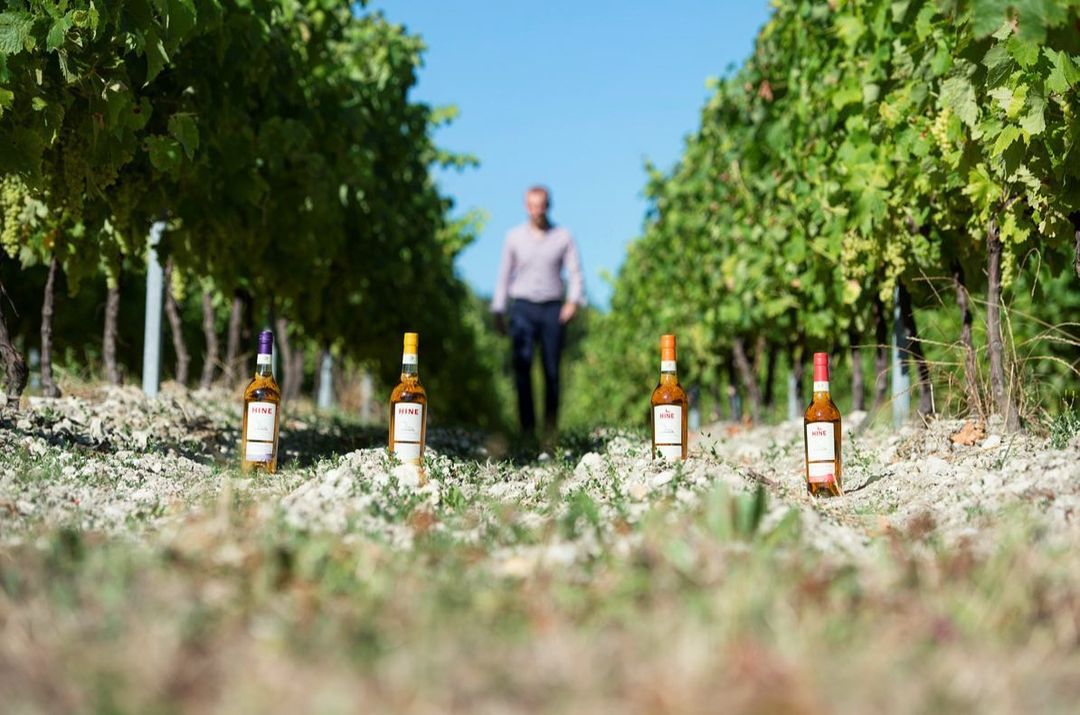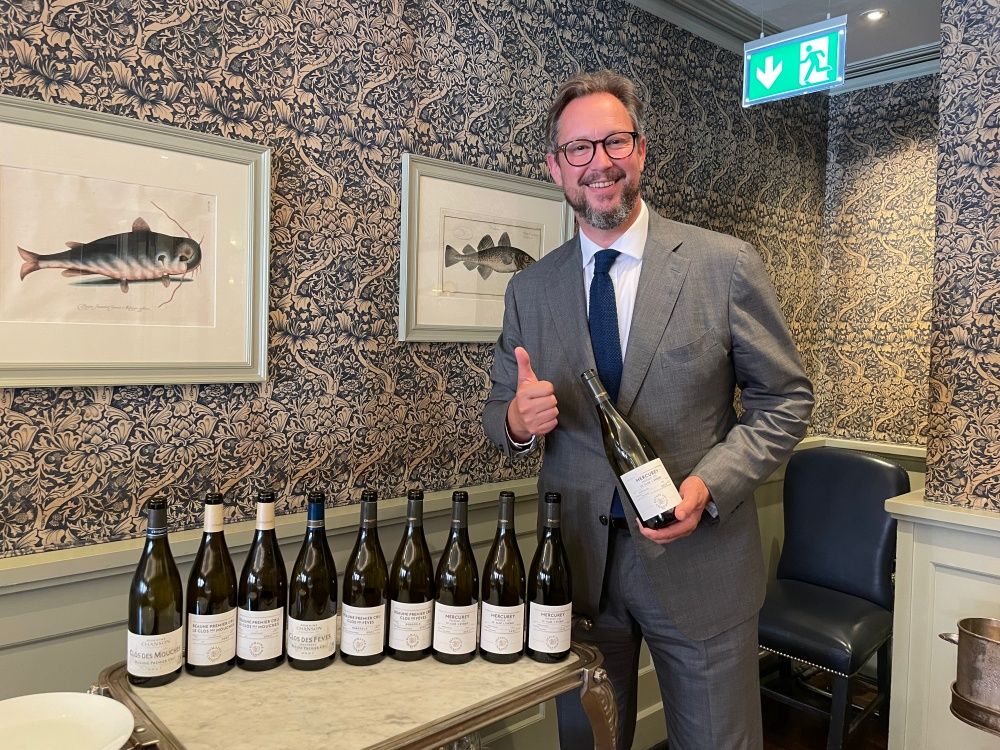“A great Cognac is first and foremost a great white wine,” says Hine cellar master, Eric Forget.
Apart from making premium quality Cognacs, that have an inbuilt collectability to them, one of the driving forces behind the Hine Bonneuil range is that it has helped the company connect with the wine community – sommeliers in particular.
At the launch of the fourth spirit in this collection Speciality Brands‘ MD Chris Seale explained that sommeliers were engaging with the Hine brand as a whole through the Bonneuil project
“They’re liking the way a spirits company is talking to them in this way which is important to us from a communications and brand perspective,” he says, “after all a great Cognac is a great wine – we always keep it close to the wine.”
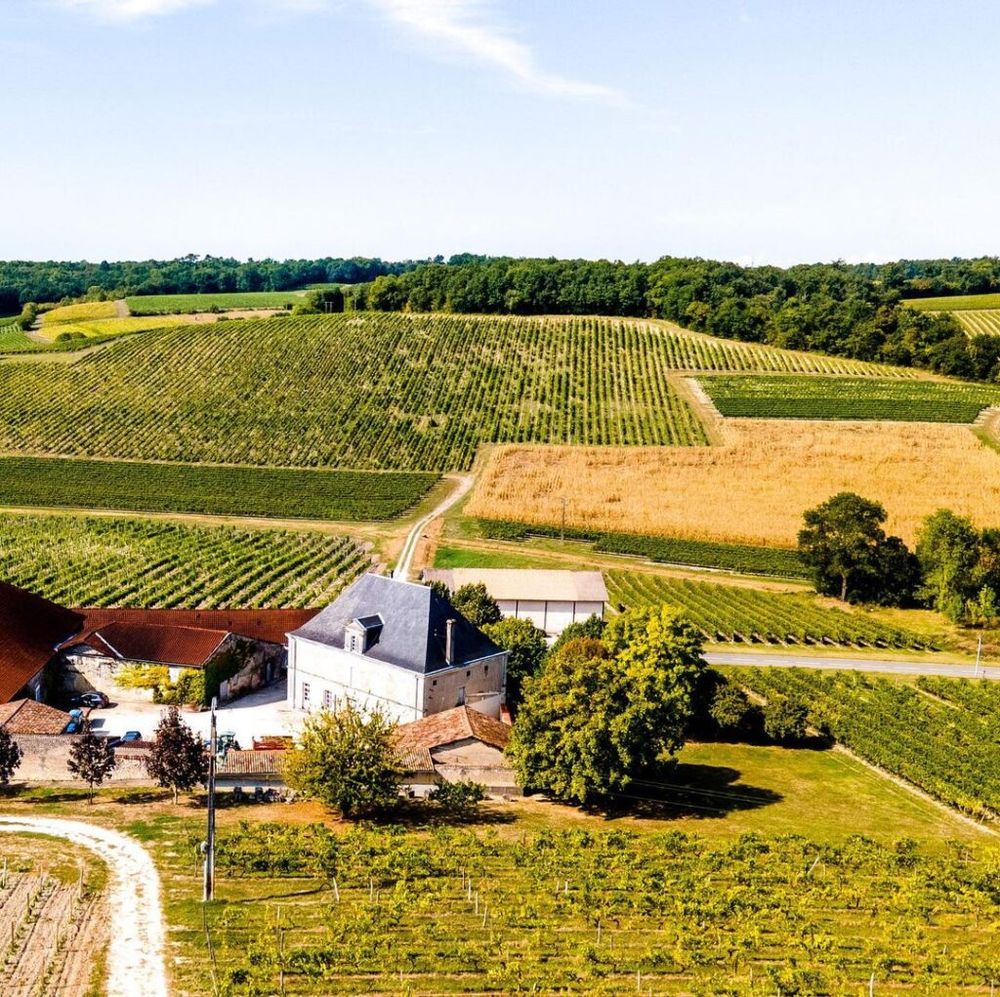
Each Bonneuil reveals the mineral nature of the vineyard’s limestone terroir.
Like Delamain, Frapin, Jon Bertelsen and other houses that have single vineyard Cognacs, Hine stresses the quality of its terroir – 70 hectares of premier cru Grande Champagne limestone at its Bonneuil estate – and the specificity of a given vintage. Great emphasis is placed on the quality of the naturally acidic Ugni Blanc grapes.
“From the chalky soils we find three parameters in these Cognacs – concentration, length in the mouth and minerality and then on top of that is the specificity of the vintage,” says Pierre Boyer, assistant cellar master and estate manager, who joined the company in 2016 when Hine was releasing the second Bonneuil in 2006.
Ageing the spirit for ten years – but no longer – is key to keeping the characteristics of the vintage, any longer and you would find more ranch in the spirit which will impact the influence of the vintage.
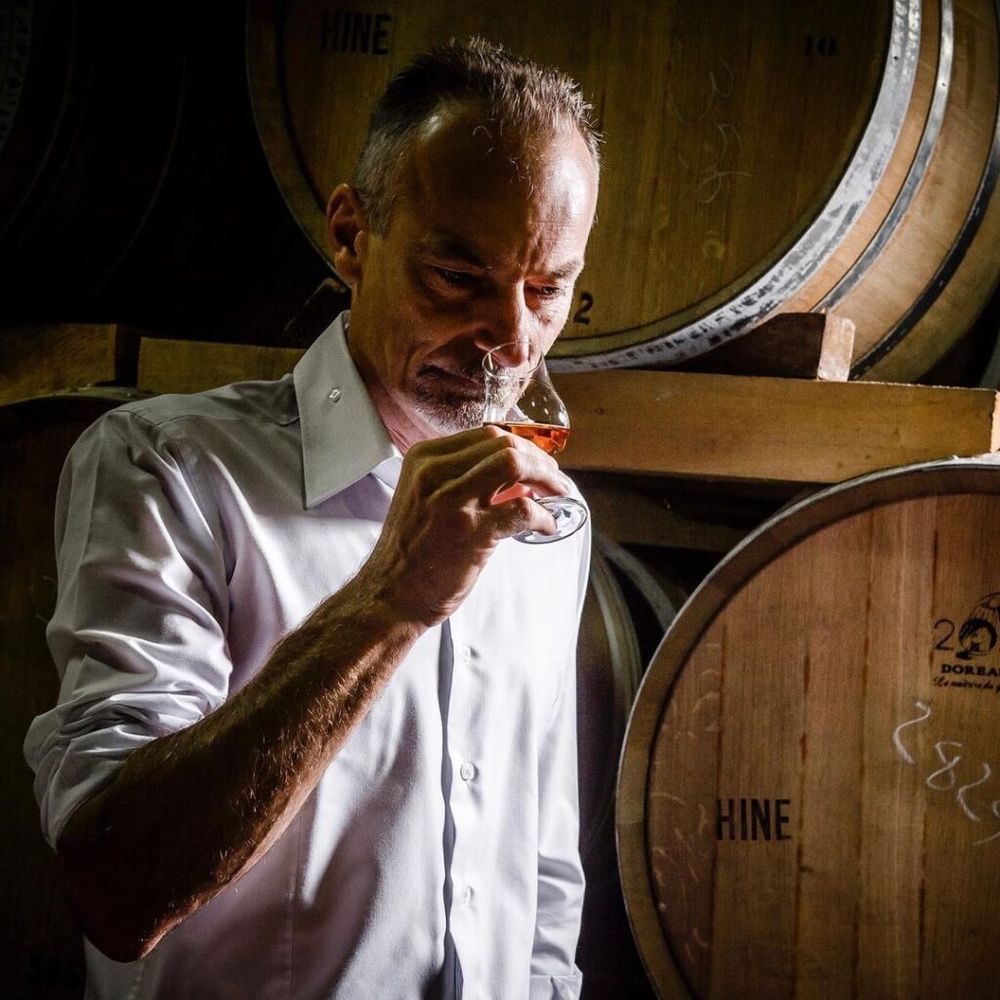
“A great Cognac is first and foremost a great white wine,” Hine cellar master Eric Forget.
Hine Bonneuil 2010 Cognac
The latest in Hine’s Bonneuil series continues with this new bottling of the 2010 vintage. The series is a single vintage, single vineyard Cognac with the fruit source from the 70 hectares around the Bonneuil estate. 2010 was a very good vintage for many wine regions in France and the Ugni Blanc in Cognac benefitted particularly from the glorious sunshine in August and September but, most importantly, the high diurnal range that importantly helps keep the high acidity in the wines, helps produce fatty acids in the eau de vie and delivers concentration of the aromas.
Lighter in colour than the previous three Bonneuil releases (2005, 2006 and 2008); there is a lot of power in the nose, which is translated to tension, liveliness and freshness in the spirit which has a smoothness and then an enormous length – classic but still notable for such a young Cognac.
There is a good deal of fruit here – Hine has coloured the labels to reflect what its team sees as the dominant fruit profile and Bonneuil 2010 Cognac is their ‘Mandarin’ Cognac. It is obviously more complex, but the lasting taste is of sweet orange citrus on the finish. Prior to that there are notes of fresh orchard fruit, baked caramel apple tart, spicy teacake, caramel, honeycomb. Seriously good. (42.1% abv, 70cl £90 rrp.)
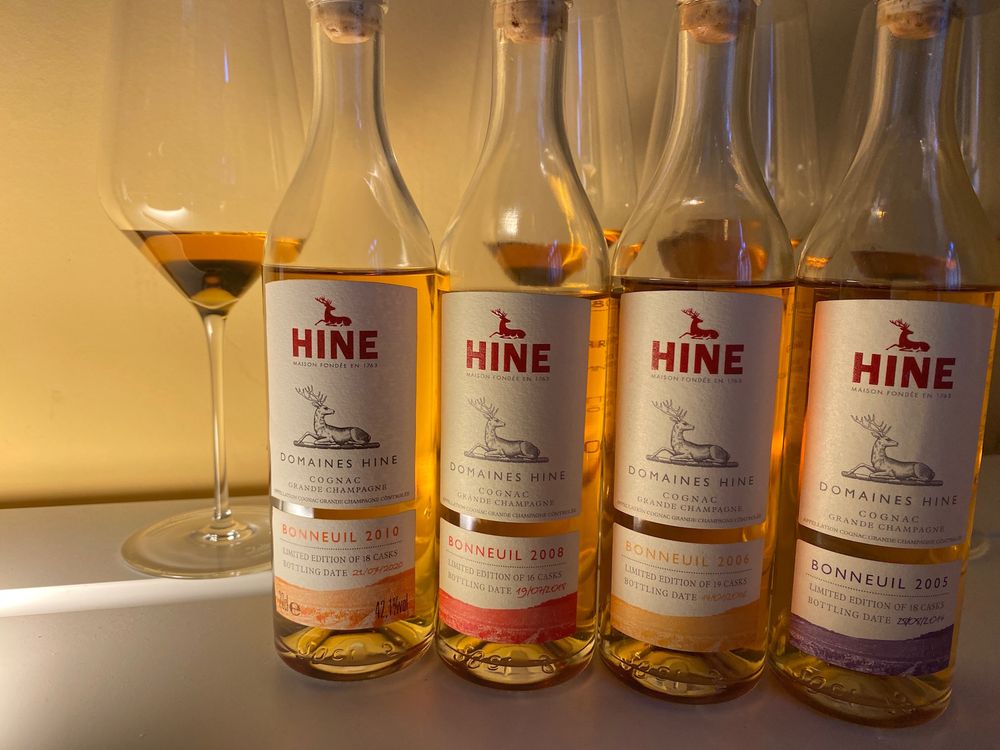
“Freshness and fruitiness is the key of the DNA of the range,” says Boyer.
I tasted the Hine Bonneuil 2010 Cognac alongside the previous three vintages – 2008, 2006 and 2005.
The 2008 was atypical and described as “rare” by Boyer on account of its red fruit notes and spiciness. The nose is all buttery brioche, vanilla and oak, the palate is winter fruits, cranberries, ginger and honeyed toffee apple. The darkest of the four.
The 2006 was a more balanced year for the grapes. The nose has white flowers, acacia honey, liquorice, crystalline citrus fruits, dates. The palate has lemon curd, tea cake, dried yellow fruit and a streak of mineral. My least favourite.
The 2005 was the lightest in colour; the nose the most complex and the palate very straight. This was a very sunny vintage, reflected in the ripeness of the nose, exotic fruits, fig, spices (fennel, ginger). The palate is also spicy with five-spice, clove, pineapple jam, a tinge of Turkish Delight on the dry finish.
In conclusion
These are all very fine Cognacs and, tasting them side by side, the differences between the four vintages are very clear – offering different nuances and moods. In a group Zoom chat with a variety of spirits experts, each of us had our own particular favourite, personally I liked the 2005 and 2010 best with 2008 close behind.
